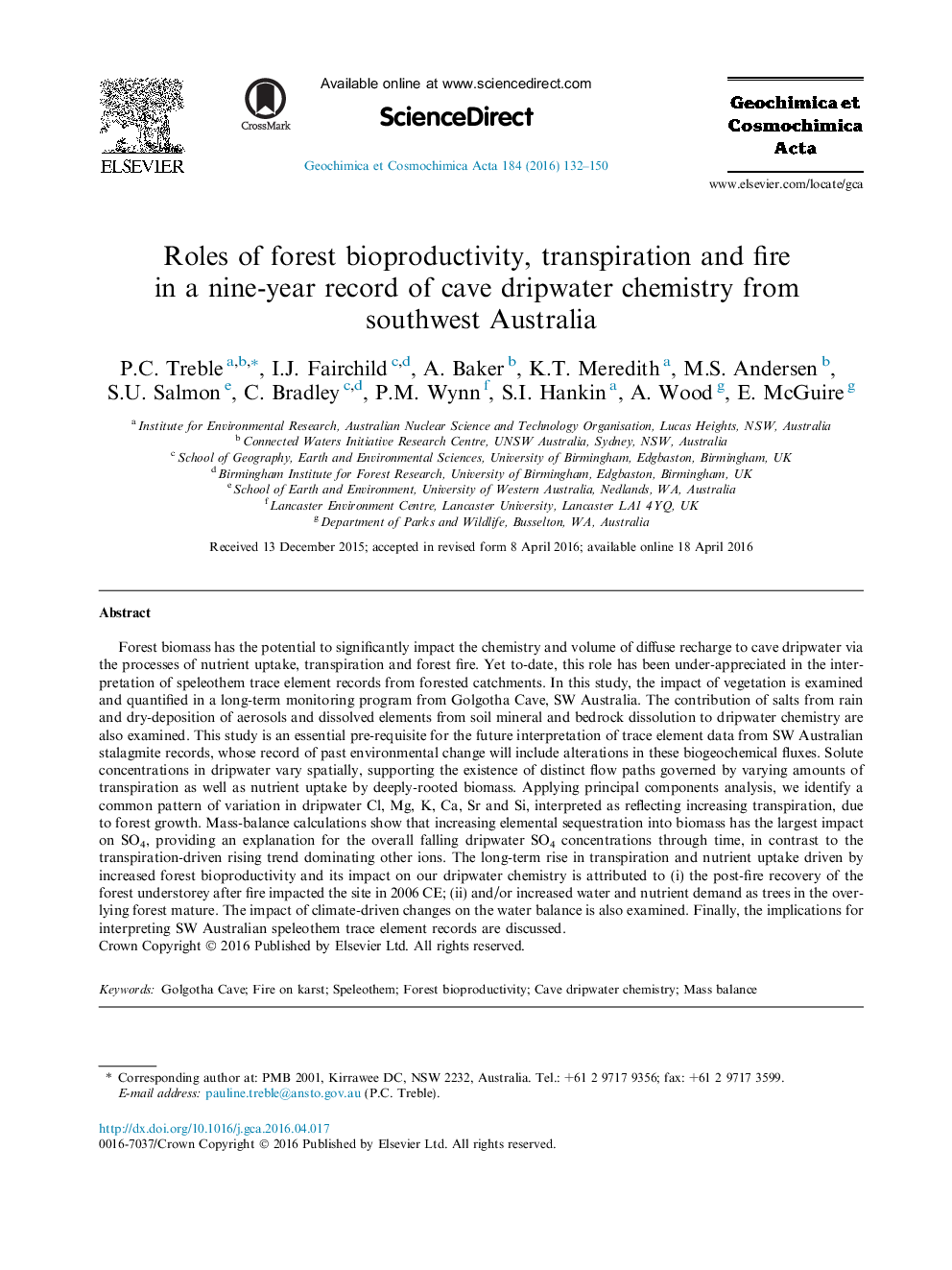| کد مقاله | کد نشریه | سال انتشار | مقاله انگلیسی | نسخه تمام متن |
|---|---|---|---|---|
| 4701808 | 1637973 | 2016 | 19 صفحه PDF | دانلود رایگان |
Forest biomass has the potential to significantly impact the chemistry and volume of diffuse recharge to cave dripwater via the processes of nutrient uptake, transpiration and forest fire. Yet to-date, this role has been under-appreciated in the interpretation of speleothem trace element records from forested catchments. In this study, the impact of vegetation is examined and quantified in a long-term monitoring program from Golgotha Cave, SW Australia. The contribution of salts from rain and dry-deposition of aerosols and dissolved elements from soil mineral and bedrock dissolution to dripwater chemistry are also examined. This study is an essential pre-requisite for the future interpretation of trace element data from SW Australian stalagmite records, whose record of past environmental change will include alterations in these biogeochemical fluxes. Solute concentrations in dripwater vary spatially, supporting the existence of distinct flow paths governed by varying amounts of transpiration as well as nutrient uptake by deeply-rooted biomass. Applying principal components analysis, we identify a common pattern of variation in dripwater Cl, Mg, K, Ca, Sr and Si, interpreted as reflecting increasing transpiration, due to forest growth. Mass-balance calculations show that increasing elemental sequestration into biomass has the largest impact on SO4, providing an explanation for the overall falling dripwater SO4 concentrations through time, in contrast to the transpiration-driven rising trend dominating other ions. The long-term rise in transpiration and nutrient uptake driven by increased forest bioproductivity and its impact on our dripwater chemistry is attributed to (i) the post-fire recovery of the forest understorey after fire impacted the site in 2006 CE; (ii) and/or increased water and nutrient demand as trees in the overlying forest mature. The impact of climate-driven changes on the water balance is also examined. Finally, the implications for interpreting SW Australian speleothem trace element records are discussed.
Journal: Geochimica et Cosmochimica Acta - Volume 184, 1 July 2016, Pages 132–150
